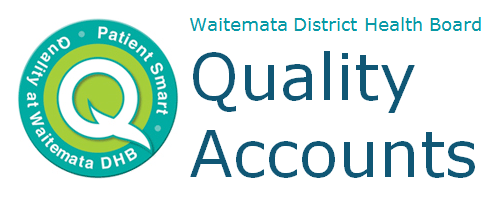
By 2025, population growth is expected to increase births by up to 700 at Waitakere Hospital and 300 at North Shore Hospital. This coupled with rising rates of intervention in labour is likely to increase the rate of caesarean births, creating challenges in our hospital maternity units.
Primary Birthing Units are a safe place where healthy women with no complications can give birth, then stay for a day or two afterwards, supported by family.
The United Kingdom (UK) Birthplace Study (2014), found women who birth in a primary unit are more likely to have a normal birth. These findings led to increased support for the development of new urban primary birthing units.
At the same time Auckland and Waitemata DHBs were collaborating with a range of stakeholders to develop a cross-DHB ten-year plan. This included a strategy to increase primary birthing beds as one way to:
- improve equity
- increase confidence in normal birth
- assist transition to parenthood
- ensure facilities meet the needs of our growing, increasingly diverse population
What are we trying to achieve?
Our approach to support the strategy of incresing primary birthing beds across the region was to:
- Consult with the public and stakeholders to determine if a primary birthing unit would be used
- Ensure development of any new primary birthing units met the needs of the community
- Hear the voice of the quieter communities less likely to participate to ensure feedback reflected the diversity of our community
What have we done?
We undertook a consultation via online and face-to-face forums to ask our community:
- Would you use a primary birthing unit?
- What model of unit iss preferred?
- Best location for a unit?
- What features are important to include in the unit?
- Any barriers and concerns about such a unit?
Collaborating to find a solution:

Did we make a difference?
Participants
We received more than 1,000 responses online and 450 people attended our open forums. Analysis of the feedback provided by the community included service user, ethnicity, gender and age:
- 59% were maternity consumers
- 9% were Lead Maternity Carers
- 9% were from community organisations
- 22% overall women under 30 years of age
- 78% were from those hoping to have a baby in the future
Participation from quieter communities:
- 8% Maori
- 11% Pacific peoples
- 10% Asian peoples
Evaluation
1. Would you use a primary birthing unit?
- 87% would recommend a primary birthing unit to someone having a baby
- 67% of respondents hoping to have a baby in the future would consider a primary birthing unit
2. What model of unit was preferred?
Community confidence was equally shown in DHB owned/operated units:
- stand alone on hospital grounds or
- in the community
3. Best locations for a unit?
Locations preferred were closer to hospitals and urban centres:
- West Auckland: Henderson, Massey, New Lynn
- North Shore: Takapuna, Milford, Northcote, Albany
4. What features were important to include?
Features highly rated overall were:
- Breastfeeding support and advice
- Family friendly
- Easy to get to by car
- Support person able to stay overnight
Unique population perspectives
Maori and Pacific:
- Cultural and spiritual features
- Supports available on site
Asian, Refugee and Migrant:
- Grandmothers to be included as support people
- Culturally appropriate and nutritious meals
- Units to be a warm environment
- Provision of supports for parents living away from their families
What Worked Well?
- Partnering the cultural groups and community leaders to engage through targeted communications and events
- Mixing online and face-to-face consultation activities
- Holding meetings in the locations people live and work – this increased responses from those less likely to participate
- Clinical and operational leaders presenting at every event, showing the community how important their feedback was and ensuring responses to questions immediately
This community engagement project has won the health category of the Australasian Core Values Awards. The awards, announced in Melbourne on 19 October 2017, recognise projects and organisations at the forefront of public participation.
Where to from here?
The results of this community consultation were presented to the DHB Board along with a business case outlining the proposal for a new urban primary birthing unit. The Waitemata DHB Board agreed in August 2017 to move ahead with plans to establish an urban primary birthing unit.
The unit will be built on the Waitakere Hospital site and the Board are now doing investigative work to determine how best to complete the development in the 2019/2020 financial year.
The decision was driven by the public consultation results and projected population figures predicting more demographic growth in west Auckland than anywhere else in the Waitemata catchment over the next eight years.
Waitemata DHB will address broader district needs in the next stage of its planning and may develop more fit-for-purpose, primary birthing units elsewhere once the Waitakere model is up and running successfully.
The proposed 500m² facility will be designed with additional input from the community, clinicians and other key stakeholders to ensure a culturally appropriate space with flexible bed capacity.
